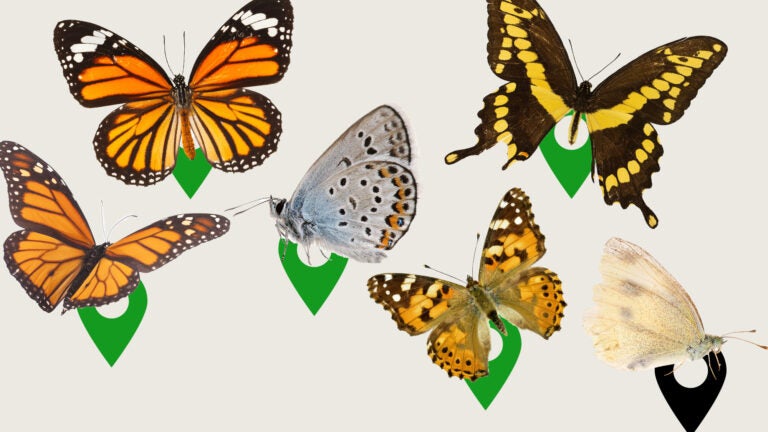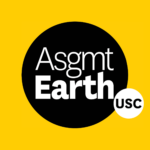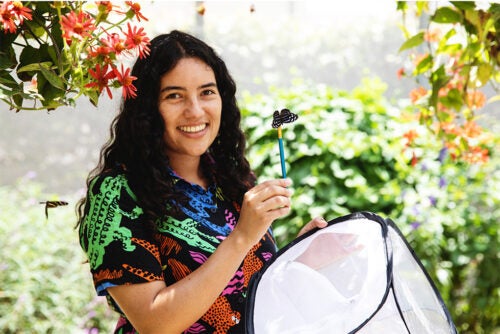
When it comes to butterflies, people prefer pretty ones. That’s a problem for scientists.
Key points:
Millions of “community scientists” collect and share data about butterflies and other insects, benefiting researchers who study biodiversity and population trends.
The actual value of this publicly collected data, as a predictor of true insect counts, has been uncertain.
For the first time, USC Dornsife researchers discovered that butterfly data on a popular community science platform is significantly skewed in favor of the most captivating and easiest-to-identify species.
 Research shows humans often perceive attractive people as more intelligent, healthier, better leaders and more trustworthy. It turns out this bias extends to the insect world.
Research shows humans often perceive attractive people as more intelligent, healthier, better leaders and more trustworthy. It turns out this bias extends to the insect world.
A new study by scientists at the USC Dornsife College of Letters, Arts and Sciences reveals that data reported on a popular community science platform is biased. On iNaturalist, butterflies with captivating markings, easily identifiable features or those that are familiar species are reported more frequently than obscure species with no distinct qualities.
Why it matters: Online community science — or participatory science — platforms enable nature-loving non-scientists to contribute data that scientists use to track insect populations.
- While their sightings contribute to conservation decisions, scientific knowledge and education, community scientists can introduce misleading biases, according to the USC Dornsife study.
- Understanding and accounting for these biases is key for scientists to estimate species distributions, assess conservation priorities and identify population trends.
- The study provides insights for enhancing participatory science programs and butterfly conservation.

In her words: “Each year, 3 million people share their observations of insect life on community-science platforms. This data can help us track declines in butterfly populations, resulting from factors like climate change or pesticide use, but only if it’s accurate,” said Laura Melissa Guzman, Gabilan Assistant Professor of Biological Sciences and Quantitative and Computational Biology at USC Dornsife.
Community science platforms: eButterfly and iNaturalist are the two most popular platforms community scientists use to report butterfly data. Their methods for collecting data differ, though.
- On iNaturalist, community scientists are encouraged to share photos of butterfly sightings so experts can verify the species. Information uploaded without a photo, or with an unclear image, cannot be verified.
- As a result, difficult-to-photograph butterflies are less likely to be included in the dataset.
- On eButterfly, participants can report sightings via a simple checklist that asks when, where, how and what kind of butterfly species was observed.
- This method results in a more comprehensive account of all species observed, similar to those data-gathering techniques used in ecological surveys. However, it requires participants to accurately identify the species they report, which can be challenging for beginners.
What they found: The researchers discovered that the iNaturalist method of relying on photos to identify and verify species creates a personal bias toward easily photographed or interesting species.
- Users of the iNaturalist platform overreported species with captivating, aesthetically distinctive features like wing tails, checkered patterns, spots, eyespots and stripes.
- They underreported many species, particularly those that were difficult to identify and those with light-colored markings on their wings.
- Behavioral traits, such as butterflies’ flight style and height, and traits that make butterflies difficult to photograph, may have affected reporting patterns, the researchers surmise.
By the numbers: Overall, 34 species were often underreported and 53 were frequently overreported on iNaturalist compared to eButterfly.
- The researchers found that butterflies from the two largest families —Nymphalidae, which includes monarchs (easy to identify and very photogenic) and Lycaenidae (commonly known as gossamer-winged butterflies for their delicate aspect)— were often overreported on iNaturalist.
- The most underreported species belonged to the Pieridae family, which are among the most common and aesthetically unappealing, and frequently regarded as garden pests.
- Researchers observed similar trends in species reporting among users in the east and west, indicating similar biases among users.
How they did it: In collaboration with North Carolina State researcher Benjamin Goldstein, Guzman and her team compared data shared on iNaturalist and eButterfly from 2000–2021.
- Using computational modeling they examined data related to 194 species from five butterfly families in North America, focusing on six factors: prevalence, ease of identification, body size, color diversity, wingspan and wing features, and migratory status.
Next steps: Guzman says improving participatory science requires training observers to identify species and raise awareness of biases that result in the underreporting of species. She recommends two major improvements to community science apps.
- Use species-specific reporting methods to reduce users’ biases that can influence ecological studies.
- Highlight both popular and underreported species to improve accuracy in the data collection process.